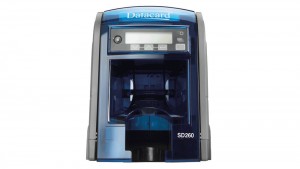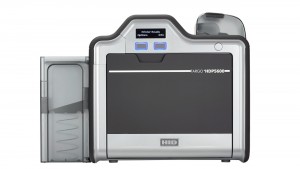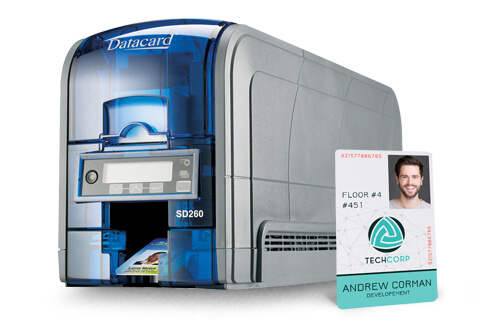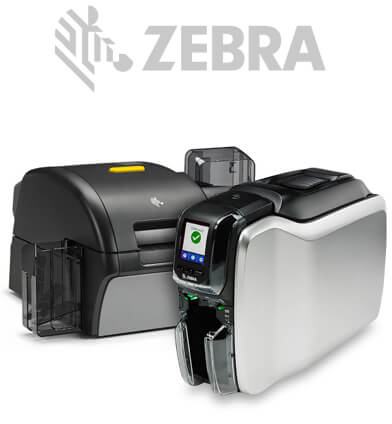Free Needs Analysis
How many IDs will you print per year?
GET LIVE HELP
PVC Card Printers
PVC card printers, also called plastic card printers, are designed to print on durable plastic ID cards using a specialized printing process. PVC card printers are available from many manufacturers with a wide range of features.
PVC Card Printers

PVC Card Printers
PVC card printers, also called plastic card printers, are designed to print on durable plastic ID cards using a specialized printing process. PVC card printers are available from many manufacturers with a wide range of features.
PVC ID Card Printers
A PVC card printer is just another term for an ID card printer. PVC, or polyvinyl chloride, is a popular synonym for plastic and while it most immediately brings pipes and construction to mind, PVC is a durable plastic that is also good for creating and printing ID cards. A PVC card printer, therefore, can refer to any type of photo ID maker.
Types of PVC Card Printers
PVC card printers can use any number of methods to transfer a design on to an ID card – here are some of the methods a card machine may use:
Dye Sublimation
Probably the most popular method of ID card printing, a ID card printerDye Sublimation printer uses a ribbon which has panels of the three primary colors (Yellow, Cyan and Magenta) along its entire length. As the card is printing, a print head with heated thermal elements passes over the ribbon and evaporates the ink on the ribbon where appropriate, and transfers it to the PVC card. Dye sublimation is a term commonly used with color PVC card printers – for a black and white PVC card printer, this process is called resin thermal transfer.
Reverse Transfer
One of the more secure forms of ID card printing is called reverse transfer. With reverse transfer printing, the card itself isn't printed, but instead a thin mylar or film overlay is printed with the reverse image of the card. After printing, the film is carefully applied to the PVC card. Reverse transfer printing is popular for smart cards and proximity/RFID cards because these cards are oddly shaped (not flat like normal PVC cards) and running them through a normal dye sublimation printer can cause a warped or bleeding image. The film from reverse transfer printing makes it easy to print secure ID cards without having to worry about compromising image quality. The film overlay on the card also makes it nearly impossible to alter or damage an ID card. Any attempt at alteration (like scratching out a number or trying to change a name) would be blatantly obvious.
Lamination & Holographs
Reverse transfer printing is similar to Holographic and Lamination printing, where a holographic overlay (laminate film) is placed over the card at the end of the printing process in order to protect the card from being tampered with. Add more security to your PVC cards by designing a custom holographic image unique to your organization.
Shop All PVC Card Printers
PVC card printers are available from a wide range of manufacturers. Shop the wide range of ID card printers available from AlphaCard:
ID Card Printers
Shop By Brand
Top Card Printers
-

Datacard SD260 ID Card Printer
- Dye Sublimation
- Hopper: 100 or Single Feed In / 25 Out
- Print Speed: 30 seconds
- Cost per card: $.39
- Warranty: 3 years
-

AlphaCard PRO 100 ID Card Printer
- Dye Sublimation & Rewritable
- Hopper: 1 In / 1 Out
- Print Speed: 35 seconds
- Warranty: 3 Years
-

AlphaCard PRO 500 ID Card Printer
- Dye Sublimation & Rewritable
- Hopper: 100 In / 30 Out
- Print Speed: 35 seconds
- Warranty: 4 Years
-

HDP5600 Reverse Transfer ID Card Printer
- Reverse Transfer
- Hopper: 100 In / 200 Out
- Print Speed: 24 Seconds
- Warranty: 3 Years
Not sure how to choose
an ID card printer?












